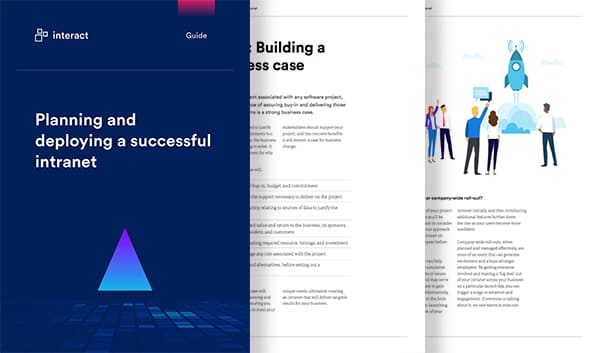What are the most popular requirements for a successful intranet?
At Interact Intranet we are very lucky to work with some brilliant customers who are achieving great success across the world with their intranets. Talking with hundreds of different businesses each year allows us get insight into how they are improving the way they work and the results they are achieving through their use of a social intranet.
We have taken all of these insights and whittled them down to the 10 most popular requirements for a successful intranet. They usually remain a closely guarded secret by our events team (only exposed at one of our seminars or Interaction Internet Conference), but I have managed to get permission to release 3 of them below.
So, in true Radio 1 DJ style, starting at 10:
At 10: Ideation
Ideation is inviting ideas from across the business, like the game show, Who Wants to be a Millionaire where you have options to help you answer questions. Phone a friend was found to get the answer right 62% of the time. This is an option we all have at work, to ask a colleague sat near to us or sending an email.
Asking the audience, was the most successful getting the answer right 91% of the time. This is where ideation comes in, using social intranet tools like discussion forums, wall posts and searching for experts means that employees can in effect tap into the collective intelligence of your organisation by ‘asking the audience’.
At 9: Software integration & single sign on
How does the new intranet live with our other systems? IT departments are looking for their existing systems to work with the new software to reduce the burden of duplicating effort. For example Outlook CRM systems and training & development systems can all work together to save time and effort. The number one integration we get asked for is Active Directory, IT departments use it to manage their users, generating email accounts for new starters and managing login details.
A good intranet will work with Active Directory by pulling the information from active directory to allow single sign on, meaning users don’t need to login to different programs individually.
At 8: Homepages
Everybody’s intranet has some kind of homepage or landing page, so what we are talking about here is personalised homepages, having a profile for each user based on where they work, how they work and who they work for.
New starters are a classic example of a situation where an employee would benefit from a personalised homepage. They have a very different information requirement from others in the business for an initial period of time. Presenting new starters with a tailored homepage on their first day or even prior to starting can support the induction process.
‘All company’ emails are rarely relevant to the whole company and this can be quite frustrating, for example the announcement about cake in the kitchen for everyone to help themselves. When you are a remote worker at home, this could be a little alienating. With personalised homepages based on location you wouldn’t receive the messages which aren’t relevant to you.
